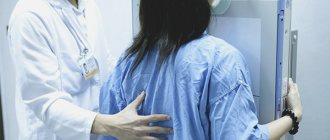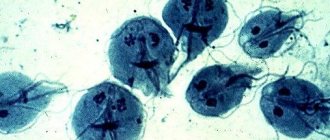How to collect stool for testing
To obtain reliable results when studying any biological material, the conditions and period of its storage are of great importance. Many people do not know whether it is possible to store stool in the refrigerator until the next day and how the test result will be affected by low temperature. In fact, this is the optimal place where the biomaterial is least likely to deteriorate.
Collection rules:
- To check stool for the most commonly prescribed indicators, you cannot give enemas before collecting it. If such a procedure was carried out, you will first have to wait at least 2 days and then take tests.
- Before emptying for laboratory purposes, you should not use laxatives or sorbents.
- Rectal suppositories can also distort the reliability of test results. You should refrain from using them for a day before collecting stool.
For individual studies, it is recommended to adhere to a special diet for 7 days. During this time, you should not eat herbs, foods that contain a lot of fat, salt, or those that are heavily fried.
Preparation and collection of analysis
Correct collection of stool analysis significantly affects the accuracy of the diagnosis. Even if you follow all the rules for storing and transporting the analysis, you can get an unreliable result. If the collection technique was violated at any stage, one can no longer vouch for the accuracy of the diagnosis. How to properly collect material for research?
- Prepare a sterile container. It is best to purchase a special container at the pharmacy. Some laboratories provide disposable containers for sample collection.
- Carefully treat the external genitalia with soapy water or furatsilin. Rinse your skin with clean water.
- Use a clean, dry container (potty or pan) to defecate.
- Take a small stool sample (5 cc) and transfer it to a previously prepared container. Pharmacy containers have a special spoon for this purpose.
- Close the container tightly with the lid.
Be sure to empty your bladder before starting the test collection.
Stool analysis cannot be carried out at any time. It is prohibited to collect material for research in the following cases:
- earlier than 2 days after the cleansing enema;
- earlier than 2 days after X-ray contrast examination of the digestive tract;
- when using sorbents (activated carbon and others) for several hours before defecation;
- in case of taking laxatives the day before the planned study;
- when using rectal suppositories for medicinal purposes;
- in women during menstruation.
How and where can you store feces for a long time before sending it to the laboratory?
If the doctor has ordered a test, then it is necessary to follow certain rules regarding the storage of feces before they fall into the hands of the laboratory technicians conducting the tests.
Important! The shelf life of the biomaterial is no more than 8 hours.
Here are the basic rules:
Ready-made, reliable, inexpensive and convenient containers will not be difficult to find in the same hospital or in a regular pharmacy. They are opened only before the procedure for collecting material. Such containers are sterilized and dried. It helps to properly preserve the material and protect it from dangerous bacteria.
A spoon is included with the container. It is designed to collect the required amount of feces. After placing the feces in the container, close it tightly with a lid.
Instead of a medical container, a glass jar with a lid is suitable. It must first be washed with soda, scalded with boiling water for sterility and completely dried.
A container previously used for stool cannot be reused. It is also better to avoid plastic utensils.
You cannot store the substance for longer than the specified time, otherwise the biological material will deteriorate and the results will be incorrect.
It is forbidden to keep the material at normal room temperature, as this will lead to its deterioration. The only acceptable place for saving is a refrigerator or balcony. The most suitable conditions for saving are from +4 to +8 degrees.
If you follow these simple recommendations, you will be able to obtain correct, reliable results of laboratory tests.
Analysis for dysbacteriosis
This study studies the intestinal microflora, the ratio of beneficial, opportunistic and pathogenic bacteria.
If there are catastrophically few beneficial bacteria in the intestines, but fungi, staphylococci and other infections settle in, this is dysbacteriosis.
Indications for stool analysis for dysbacteriosis:
- constipation;
- diarrhea;
- flatulence;
- allergy;
- rashes on the skin, in particular on the face;
- long-term treatment with hormones and antibiotics.
Most often, a test for dysbacteriosis (also called a microflora test) is taken by infants and adolescents with frequent acute respiratory viral infections and allergies. You need to understand that feces cannot be stored for a long time to determine dysbiosis.
He must be in the laboratory within three hours
. Moreover, it is very desirable that it be morning feces. The sooner the material gets to the laboratory, the more reliable the result will be. 6 hours after collection, the analysis will be invalid, so there is no point in sending stool for testing.
How to properly store feces collected in the evening until the morning
If samples are planned to be brought in for analysis in the morning, but the material was obtained the night before or at night, then it is hidden in the refrigerator. It is best to place the container on the middle shelf - there is the most suitable temperature. You should not store material on the side, lowest and highest shelves.
From the moment the feces are collected until they are delivered to the clinic or laboratory, no more than 8 hours should pass. If stool is stored for more than the specified time, it will become unsuitable for analysis. This total time also includes the journey to the laboratory. If it takes about an hour to get there, then you can store the material at home for no more than 7 hours.
When submitting the test to the laboratory assistant, be sure to indicate the person’s details and age; this is important for the specialist. They also briefly describe the stool (hard, regular, liquid, with a laxative).
Storage of biomaterial
If stool is collected in the morning, it must be delivered to the laboratory within the next two hours after collection. It is best to collect stool in the morning, but if this is not possible, then it is stored in the refrigerator until the morning. For most parents, it is not entirely clear how long feces can be stored in the refrigerator for analysis. Please note that collected feces in a tightly sealed container must be stored on the bottom shelf for no more than twelve hours. Therefore, when collecting stool, you need to take into account when it will be delivered to the laboratory so as not to get incorrect results. Knowing how to properly store stool for analysis from evening to morning, you can easily collect biomaterial for research.
Stool analysis often becomes a problem for many people. Defecation is a specific process; it cannot be done to order. Therefore, the question of storing feces is always relevant.
Ideally, a person with a healthy stomach and intestines has a bowel movement every day in the morning. But with diseases and problems with the intestines, bowel movements may be irregular.
Let's figure out how and for how long you can store feces in the refrigerator (each type of analysis has its own standards
).
There are several rules that must be followed in order for the analysis to be truthful and show the whole situation. There are also tips to help you properly organize the collection of stool for research.
- Feces for analysis can be collected only two days after the enema, if one was performed.
- The day before collection, you cannot use suppositories
(neither laxatives nor medicinal), you cannot drink
laxative
tablets, drops and herbs, you cannot take sorbents (activated carbon, enterosgel, polysorb and others). - Within a week, it is advisable to start following a diet without spicy, fatty and fried foods
. You need to include vegetables and dairy products in your diet. This will help collect reliable material and help set up regular morning bowel movements. - If the analysis is done for an infant, you cannot introduce new foods into the child’s diet a few days before collection.
- Both adults and children must wash themselves with soap
before collecting stool. - Be careful not to get any urine into your stool
; these two media should not be mixed. - Defecation must be done in a clean and dry container
. A vessel, pot or cleanly washed basin will do. For small children, you can take stool from a diaper. - If a person has constipation and is unable to empty their bowels on their own, it is necessary to consult a doctor and discuss how to properly collect stool.
- The most truthful analysis will be when examining morning stool
, which entered the laboratory within a couple of hours.
Features of storage in the refrigerator
You can keep feces in a cool place for several hours, which is determined by specific parameters. The maximum period is up to 8 hours in the refrigerator, optimal less than 6 hours.
Saving periods depending on the type of analysis:
- from 5, but no more than 8 hours, you can keep stool in the refrigerator to check for eggworms, enterobiasis,
- only 5-6 hours can be saved when testing for occult blood,
- only 6-8 hours for a coprogram.
To prevent the prepared biomaterial from deteriorating, it is important that the temperature indicators are from 4 to 8 degrees above zero. To test for occult blood, it is better to store it at a temperature no higher than +6 degrees.
What does a stool test show?
Stool analysis can become the most important diagnostic tool in the hands of a competent specialist. To determine the general condition of the body (general stool analysis), it will allow you to assess the condition of the digestive tract and identify deviations in its functioning. done in almost any clinic or diagnostic center. Based on the results of the analysis, parents will learn about the presence of undigested food particles, starch, protein, blood, and bilirubin in the stool. Other physical and chemical indicators are also assessed. There are also highly targeted stool studies.
Before doing this, you should prepare everything you need to collect stool:
- a sterile plastic jar from a pharmacy with a spoon;
- sterile diaper or oilcloth;
- a potty washed with baby soap - for older children.
Important! It is best to collect feces from a baby not from the diaper. It is saturated not only with feces, but also with urine, and this is not permissible during research.
You need to be ready to collect feces in the morning, but you should not forget about this possibility during the daytime hours, because the process is reflexive and is not regulated by a strong-willed decision to “be patient” when the mother is ready. After observing the baby, you can notice the child's urge to defecate - the children calm down, become concentrated, with tight stool, you can notice a reddened face and beads of sweat on the forehead when the baby pushes.
Collection of biomaterial must be done immediately after defecation in a clean, dry container. As a last resort, collecting feces in household dishes is allowed. It is necessary to take glassware that has been previously washed and dried. The container must be sealed tightly and the child’s name and age must be signed.
How to collect feces from a baby in a jar for analysis
If defecation begins.
- The child needs to place a pre-prepared oilcloth or diaper under his butt. Any clean oilcloth or the reverse side of a diaper diaper will do - they also have a layer of polyethylene. In this case, you can be sure that no lint or diaper strings will get into the feces.
- Thick stool is collected with a stool spoon attached to the lid of the container.
- Liquid feces are poured from an oilcloth placed under the baby’s bottom.
- The container is then tightly sealed and sent to the laboratory. The analysis collected the night before can be stored in the refrigerator.
If there is no bowel movement for a long time.
- The child needs to place a pre-prepared oilcloth or diaper under his butt.
- Massage the tummy, stroking it with light pressure with your palm in a clockwise direction. Then press the baby's legs, bent at the knees, to the tummy. Perform stroking and exercises alternately.
- Next, you can try to stimulate the anus with a gas tube, the tip of which is lubricated with Vaseline.
- If necessary, repeat step 2 and step 3 sequentially.
How much stool does a baby need for analysis? On average, for any analysis it is necessary to collect a volume equivalent to 1-2 teaspoons
– this is quite enough to evaluate the necessary indicators.
Is special training needed?
- Special preparation in the form of washing is not required if normal daily hygiene procedures are followed.
- If your baby is taking antibacterial drugs, you must notify your doctor about this. For some tests, taking antibacterial agents may not be acceptable, so the doctor may reschedule the stool sample.
- When carrying out a coprogram, the use of antibiotics and enzyme preparations is clearly excluded.
- When conducting a test for occult blood, it is necessary to exclude tomatoes, fish products and meat from the child’s diet three days before collecting biomaterial, so as not to get a false positive result.
- When analyzing stool for digestive enzymes, it is prohibited to give enzyme preparations three days in advance, otherwise you may get incorrect data.
Feces cannot be donated in some cases:
- if the child was given laxatives or suppositories;
- if an enema was done;
- when mixing feces with urine.
How to collect stool for examination in infants?
The type of analysis determines everything: for some it should only be fresh, for others it is permissible to store it from evening until morning.
Features of taking material for various studies:
- If an occult blood test is expected, the child should not take medications with iron, iodine or bromine compounds. If he is breastfed, then these requirements must be met by the nursing mother.
- If a helminth is noticed in the child’s feces, it must be placed in a container with feces. To determine the eggs, material continues to be collected over the next 2-3 days.
- When checking newborns for dysbiosis for bacterial culture, feces are collected with special care. This is a microbiological analysis, so the stool container requires a sterile one. No urine is allowed in feces. If blood streaks or accumulations of mucus are noticed in the stool, they are also placed in a container sent for analysis.
- To test stool for Giardia, it is important to provide fresh material. This means that the material must be taken to the research center immediately after receiving it.
- The coprogram allows the collection of feces from the child in the evening. I keep it in the refrigerator and deliver it the next morning.
Collecting the required amount of feces from a baby is not so easy, sometimes it takes several days. After all, it is not always possible to record the moment a baby has a bowel movement. Do not despair: with proper collection and storage of biological material, the analyzes will be reliable. Based on them, the doctor will prescribe the appropriate treatment. You can store shelled walnuts for a long time at home in an airtight container even when, Meat belongs to the category of perishable products, and it can be stored for up to two years. When too many dishes are prepared at once It was not possible to cope with them, it is necessary. Flowering plants are designed to decorate a person’s life, but they themselves are short-lived. How to make chrysanthemums
How to collect stool for analysis from an adult?
The high information content of stool analysis and a wide list of study criteria allows it to be considered mandatory when visiting a doctor, and also requires special attention to the procedure for collecting biomaterial. How to collect a stool sample - rules:
- Initially, you should purchase a special sterile container with a spoon fixed to the lid from a pharmacy or laboratory service department (do not wash or rinse it). Many patients wonder: is it possible to donate stool for analysis in a glass jar? In light of the availability of special plastic containers for each patient (low price in the pharmacy and free in the laboratory), it is recommended to avoid homemade containers, especially when the fact of dysbacteriosis is established. Homemade glass jars do not guarantee sterility, which means that the possibility of foreign microflora entering and obtaining unreliable results cannot be ruled out;
Photo of a container for collecting feces
- It is strictly forbidden to touch the bottom or surface of the spoon of the resulting sterile container with your hands;
- before the collection procedure, hygiene procedures are carried out with the exclusion of scented soaps and cosmetics, as well as oils;
- the biomaterial is collected with a special spoon attached to the container lid from a clean container or vessel. Important: collecting feces that touches the bottom of the toilet is unacceptable, since there is a risk of introducing foreign bacteria and protozoa;
- urine impurities should be absent;
- The container should be filled to at least 1/3 of the total volume. A smaller amount of biomaterial may not be sufficient to properly prepare a smear for microcopying or culture.
Stages of collecting stool for analysis
If it is not possible to take stool
If it is not possible to collect and deliver feces to the laboratory in time, you can resort to another method, or rather, take a scraping from the intestinal mucosa. In this case, the material will be collected using a cotton swab, which is placed in a hermetically sealed tube and sent to the laboratory within two hours.
Scrapings are mainly taken from children. It is impossible to completely replace the process of stool collection with this procedure. Because most diseases simply cannot be detected this way. You should check with your doctor about exactly how to take the test.
Stool analysis in a plastic container
This option for storing and delivering feces for analysis is the most optimal. Pharmacies sell special plastic containers for urine and feces. The stool container looks like a cylinder - it is narrow and elongated. There is a special spatula inside that can be used to collect feces and immediately place it in a container.
These plastic containers are sterile
. They cannot be opened in advance. It is prescribed to unpack the container immediately before collecting the material. Instructions with explanations are included in the package.
Features of material storage depending on the type of research
- It is necessary to prepare a sterile container.
- You need to empty your bladder.
- The surface of the genital organs should be treated with soap or furatsilin.
- It is necessary to select the required amount of material for analysis, place it in a container and tightly close the lid.
How much stool is needed for analysis? A volume of 1-2 tea spoons will be quite enough.
Stool collection must be carried out in the morning, on the day of the test. The selected material must be delivered to the laboratory within an hour.
The procedure can be carried out in the evening, but taking into account that the interval between collecting and submitting the material for analysis does not exceed eight hours. However, in this case, the question arises: “How to store a stool sample?” Let's figure it out now.
Many people who are prescribed this medical examination simply do not attach importance to the generally accepted rules for the collection and storage of feces. The results of such neglect can be very different. Indeed, in the case of long-term storage, a large number of bacteria simply die, and the remaining microorganisms, on the contrary, begin to multiply. The same thing happens when the material is frozen. The results of such a study will initially be incorrect.
The likelihood that the attending physician will be alarmed by the test results and will send you for a repeat test is quite small. Most often, the wrong treatment is simply prescribed. As a result, the problem with which the patient came in will not only not go away, but may also lead to a serious complication or the development of a new disease.
Almost all infants under three months of age experience colic and bloating. Young parents just need to get through this time. However, if the child is already more than four months old, and this problem has not disappeared anywhere, and in addition to it, the child’s stool begins to have a greenish tint or admixtures of blood and mucus, then you should immediately contact your local pediatrician.
In this case, in order to correctly determine the diagnosis and prescribe treatment, the doctor usually gives a referral to have the baby’s stool tested.
The process of collecting feces from a baby is quite difficult. Therefore, parents have to go to a number of tricks to do this.
Let's start with the fact that for storing feces, it is best to purchase a special container, which is sold at any pharmacy. It is necessary to collect stool in the first half of the day. If a child poops every day in the morning, at a certain time, this greatly simplifies the task.
Since it is impossible to wash the child immediately before defecation, you should simply carry out daily hygiene procedures. Provided that the baby's stool is of normal consistency, it can be collected from the surface of the diaper. You should not press on the diaper so that foreign impurities and urine do not get into the material for analysis. If the stool is liquid, then it is best to place the child on oilcloth, with which you can then simply pour the stool into a jar.
The test container must be delivered to the laboratory within three hours after collection. At this time, the container should be stored in the refrigerator, hermetically sealed.
The high information content of stool analysis and a wide list of study criteria allows it to be considered mandatory when visiting a doctor, and also requires special attention to the procedure for collecting biomaterial. How to collect a stool sample - rules:
- Initially, you should purchase a special sterile container with a spoon fixed to the lid from a pharmacy or laboratory service department (do not wash or rinse it). Many patients wonder: is it possible to donate stool for analysis in a glass jar? In light of the availability of special plastic containers for each patient (low price in the pharmacy and free in the laboratory), it is recommended to avoid homemade containers, especially when the fact of dysbacteriosis is established. Homemade glass jars do not guarantee sterility, which means that the possibility of foreign microflora entering and obtaining unreliable results cannot be ruled out;
Photo of a container for collecting feces
- It is strictly forbidden to touch the bottom or surface of the spoon of the resulting sterile container with your hands;
- before the collection procedure, hygiene procedures are carried out with the exclusion of scented soaps and cosmetics, as well as oils;
- the biomaterial is collected with a special spoon attached to the container lid from a clean container or vessel. Important: collecting feces that touches the bottom of the toilet is unacceptable, since there is a risk of introducing foreign bacteria and protozoa;
- urine impurities should be absent;
- The container should be filled to at least 1/3 of the total volume. A smaller amount of biomaterial may not be sufficient to properly prepare a smear for microcopying or culture.
Stages of collecting stool for analysis
List of studies in which stool is the biomaterial:
- coprogram – a comprehensive assessment of the physical and chemical state of feces. It is used to identify the presence of pathologies in the functioning of the gastrointestinal tract, as well as to assess the effectiveness of the chosen treatment tactics;
- dysbacteriosis, often in combination with a test for sensitivity to various antibiotics. Allows you to determine the cause of diarrhea and other digestive disorders, as well as select an adequate antibiotic therapy regimen;
- bacteriological analysis to detect the presence of pathogenic microflora and typhoparasitic group is mandatory for all patients upon hospitalization;
- a test for occult blood is necessary to assess the degree of damage to the mucous membrane lining the gastrointestinal tract. The advantage of the method is the ability to detect changes in hemoglobin concentration in red blood cells even before this fact can be diagnosed by blood smear microscopy;
- establishing the fact of the presence of helminths, Giardia, opistarchosis, echinococcosis, toxocariasis and trichnellosis, the primary location of which is the lower gastrointestinal tract.
The answer to this question, how many hours before the collected feces should be delivered to the laboratory, also depends on what kind of research will be carried out.
If it is not possible to deliver stool for analysis immediately, it can be stored in the refrigerator for several hours
The shelf life of fresh feces for coprogram does not exceed eight hours if it is stored on the middle shelf of the refrigerator in a tightly closed container. The middle shelf of the refrigerator provides a temperature range of 4–8 °C. Under no circumstances should you place a container with biomaterial in the freezer or on the side shelf of the refrigerator.
Sub-zero temperature in the first case or frequent temperature changes as a result of opening and closing the refrigerator in the second negatively affect the natural parameters of feces, which will lead to distortion of the analysis result. It is quite possible to store material on the middle shelf of the refrigerator from evening until morning. The main thing is that the storage time of feces at room temperature is minimal, ideally it should not exceed 15-20 minutes.
To test stool for helminth eggs, the material must be as fresh as possible. This is due to the fact that during long-term storage, digestive enzymes contained in feces cause lysis (dissolution) of the shell of parasite eggs, resulting in a false negative result. In this case, special preservatives are used to increase the storage time of the material.
Experts have determined the rules for where and how to store feces for analysis.
- It is important to use sterile containers of a certain type (they are commercially available). The special container, which includes a spoon for collecting biomaterial, is opened immediately before its use. After the procedure, the container should be tightly closed to prevent germs from entering from the outside.
- When it is impossible to use containers from the pharmacy, an ordinary glass jar with an airtight lid will do. The lid, like the dishes themselves, must be sterilized and dried in advance. For better cleaning, you should use baking soda. The soda is subsequently washed off without a trace after thorough rinsing. After this, the jar is sterilized over hot steam (you can simply pour boiling water over it) and dried well.
It is unacceptable to store stool samples in plastic containers and reuse containers for these purposes. At the same time, biomaterial cannot be left in storage areas for a long time. This will prevent the true clinical picture from being established during the research process.
Can stool samples be stored in the refrigerator? In winter, biological material is taken to the balcony. In summer, the best option would be the refrigerator door. It is not advisable to leave a container with feces at room temperature. Such storage will most likely lead to unreliable study results.
Feces collected in the morning should be sent for examination immediately. For transportation, use a bag - a refrigerator, a thermal bag or a special container.
When none of the above is at hand, the container is wrapped in several layers of paper. Then wrap it in thick material (a terry towel will do). This measure will help extend the “freshness” of the material by 2 – 3 hours.
To deliver stool to the laboratory, the personal presence of its “owner” is not required. You can always entrust this important mission to someone close to you or order a courier who, for an additional fee, will do everything “in the best possible way.” Although not every medical institution provides such services today.
If everything is more or less clear with an adult, then it is sometimes impossible to predict the exact time of a child’s bowel movement. It will be a great success for parents if they can get their offspring’s biomaterial immediately before going to the laboratory. But if the “happy moment” has not arrived in the morning, you can use the material collected the day before, if the bowel movement occurred no more than 6 to 8 hours ago.
How to bring morning stool to the laboratory
If the stool is morning, it must be taken to the laboratory as quickly as possible. The ideal way is to transport the container with the material in a cooler bag, thermal bag or container.
If this is not possible, then the container must be wrapped in several layers of paper and then wrapped using a towel or any thick fabric. In this case, there are at least two to three hours before the test .
You can also deliver the material to the laboratory using couriers who work in some laboratories.










